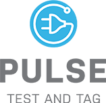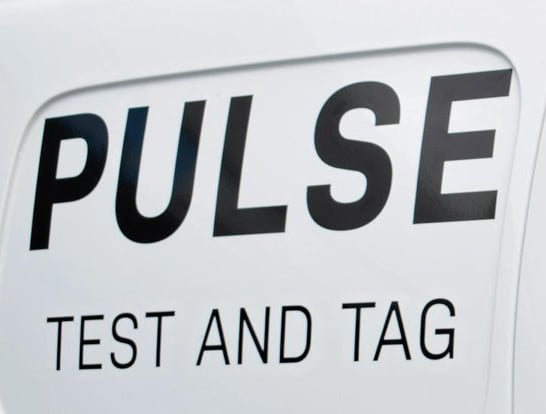What we cover on this page About Testing & Tagging in New South Wales:
- What is Testing and Tagging?
- Is Testing and Tagging Mandatory in New South Wales, Australia?
- How Does Testing and Tagging Work in NSW?
- How Often Should I Be Testing and Tagging My Electrical Equipment in New South Wales?
- Test and Tag Colours in NSW - What They Are and How They Work
- Other Tag Requirements in NSW
- Can I Test and Tag on My Own In NSW, Australia?
What is Testing and Tagging?
Testing and tagging is the process of examining electrical equipment to ensure its safe functioning and use. It entails regularly checking portable appliances for wear and tear, as well as taking a deeper look into its power flow to make sure everything’s in good working order. Testing and tagging is done by businesses in New South Wales and throughout Australia as a preventative measure to electrical accidents, injuries and fires.
Is Testing and Tagging Mandatory in New South Wales, Australia?
Yes! Various laws in New South Wales designate employers with the responsibility of taking the actions necessary to maintain a safe and low-risk working environment for their staff. This includes the proper management of electrical equipment, which although enforced on a state level, is mainly standardised through national provisions AS/NZS 3760 and AS/NZS 3012. Both of these guidelines delve into the details of how businesses should go about testing and tagging their electrical appliances, as well as implementing other safety measures in accordance with the law.
Non-compliance with national standards or state directives on electrical safety can see businessowners penalised 40 units in the case of an individual and 210 in that of a body corporate. The current cost of one penalty unit in NSW is equivalent to about $110, meaning that individuals and businesses who fail to test, tag and maintain workplace safety can expect to pay up to$4,400 and $23,100 respectively.
It’s also worth noting that employers who clearly derelict their duty to ensure the safety of their equipment risk having to pay compensation to any workers who are injured as a result.
How Does Testing and Tagging Work in NSW?
The testing and tagging process is typically done in two parts, the first of which involves a physical assessment of the appliance and the second a technical audit of its functioning.
Physical Inspection
During the physical inspection, the appliance is examined for any visible damage that could pose a risk to its users. This includes cracks in the casing, frayed cords, and missing or damaged plugs. If any damage is found, the appliance is taken out of service immediately and must be repaired or replaced before it can be used again.
Testing With a Portable Appliance Tester
Once the appliance has passed the physical inspection, it is then connected to a portable appliance tester (PAT), which helps to ensure that it is safe to use. The tester assesses the appliance’s electrical current, voltage and resistance, as well a sits earthing status. If everything checks out, the appliance is given a green tag to indicate that it is safe to use. If not, it is taken out of service until the necessary repairs or replacements can be made.
How Often Should I Be Testing and Tagging My Electrical Equipment in New South Wales?
In order to be in compliance with Australian and New South Wales law, businesses are required to test all of their portable electrical appliances and equipment on a regular basis. The definition of “regular” can differ depending on the type of appliance, as well as its intended use and location.
For example, appliances that are used more frequently or are located in harsher environments(such as outdoor areas) will need to be tested more often than those that are used less frequently or are located in safer environments (such as office areas).
National standards AS 3760 and 3012 outline the following guidelines for testing and tagging intervals:
- Applications for building, construction and demolition-3 months
- Equipment in factories, warehouses and production facilities-6 months
- Environments in which appliances and/or supply cords are prone to flexing or wear-12 months
- Environments in which appliances and/or supply cords are not prone to flexing or excessive wear-5 years
Test and Tag Colours in NSW - What They Are and How They Work
National standards AS 3760 and 3012 place a special responsibility upon the construction and demolition industries to test and tag their electrical equipment on a quarterly basis (every three months). This is simply due to the fact that these industries are more likely to use portable electrical equipment in harsher environments, which can lead to a greater risk of damage and potential safety hazards. In order to make compliance with these requirements simpler, the government also mandates the use of a colour coded tagging system for construction and demolition companies. Often referred to as RGBY, this scheme uses four different colours to indicate when an appliance was last tested and tagged.
- Red Tag – December, January and February
- Green Tag – March, April and May
- Blue Tag – June, July and August
- Yellow Tag – September, October and November
While RGBY colour coding isn’t required for businesses outside of the industries of construction and demolition, it is highly recommended as it can help to stream line the testing and taggingprocess.
Other Tag Requirements in NSW
Aside from the RGBY colour coding system, there are a few other requirements that businesses in New South Wales need to be aware of when it comes to tagging their electrical equipment.
These include:
- Tests and tags must be conducted by a qualified and “competent” person.
- Tests and tags must be conducted using an appropriate testing device.
- Tests and tags must be conducted at the prescribed intervals.
- A valid tag must be affixed to each appliance in a visible location.
- The tag must include the name or logo of the testing company, as well as the date of testing.
Can I Test and Tag on My Own In NSW, Australia?
No. In order to test and tag electrical equipment in New South Wales, you must be a qualified electrician or an employee of a licensed testing and tagging company. This is because testing and tagging electrical equipment requires the use of specialised tools and knowledge, which most people do not have. Attempting to test and tag equipment on your own can be extremely dangerous and is not worth the risk. It can also invalidate your insurance policy, as most policies require that all electrical equipment be tested and tagged by a qualified professional.



